
The Bottom Line
Introduction, Specifications, and Pricing
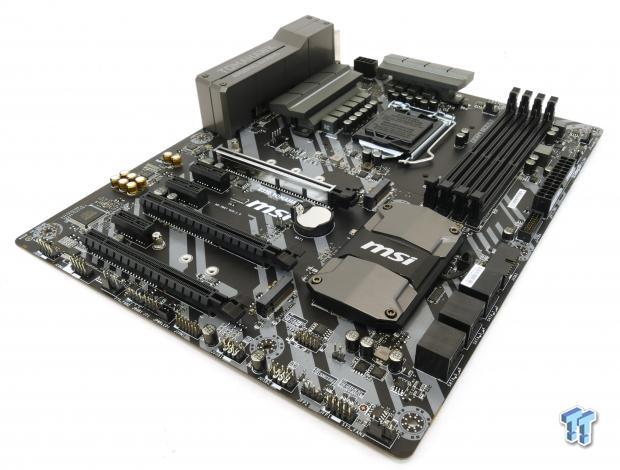
While we have previously looked at MSI's high-end motherboards for the Z370 platform, today we are taking a look at a significantly more affordable motherboard. The Z370 TOMAHAWK is designed to fulfill the needs of those who can't or won't dish out over $200 for a motherboard. That market is huge, and MSI has done a good job of addressing platform cost in regards to Intel's latest 8th Generation platform. The Z370 TOMAHAWK is designed to offer a reasonable balance of features to performance, so let's see what it has to offer.
Specifications
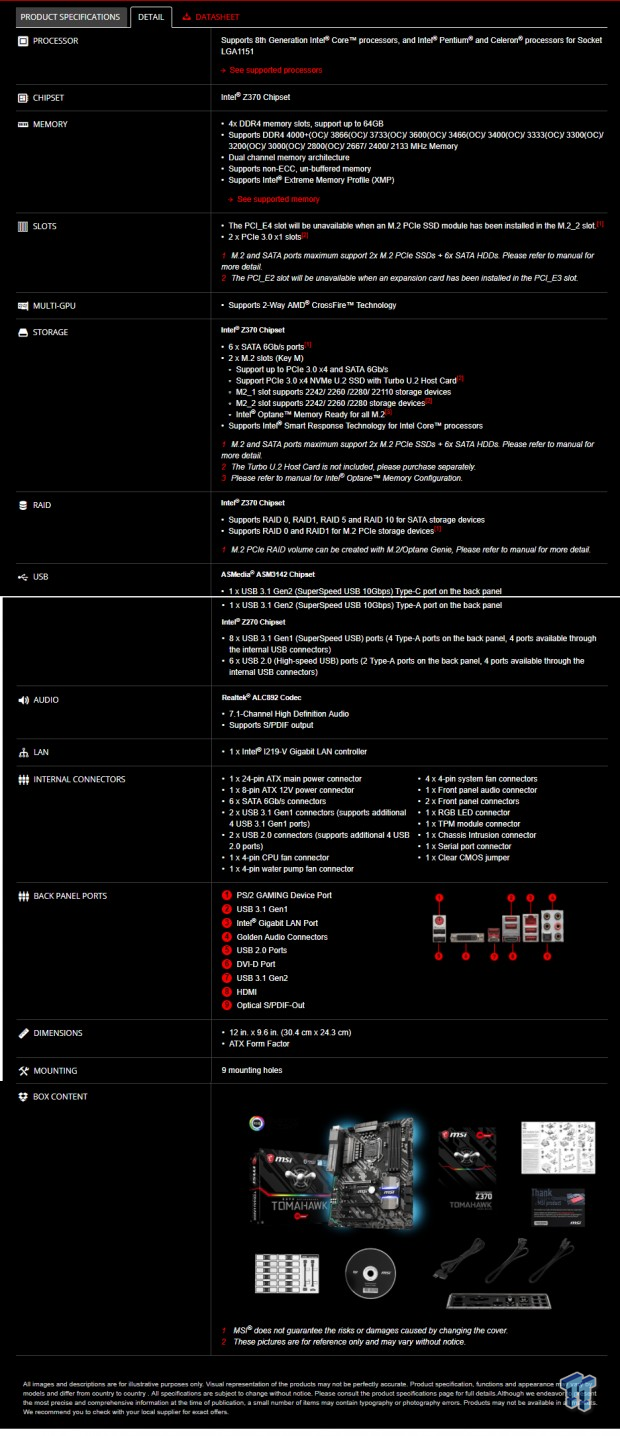
The Z370 TOMAHAWK offers two M.2 slots, USB 3.1, USB 3.0, SATA6Gb/s, and it support CrossFireX.
Pricing
The Z370 TOMAHAWK costs $139.99
Packaging and Z370 TOMAHAWK Overview
Packaging and Overview
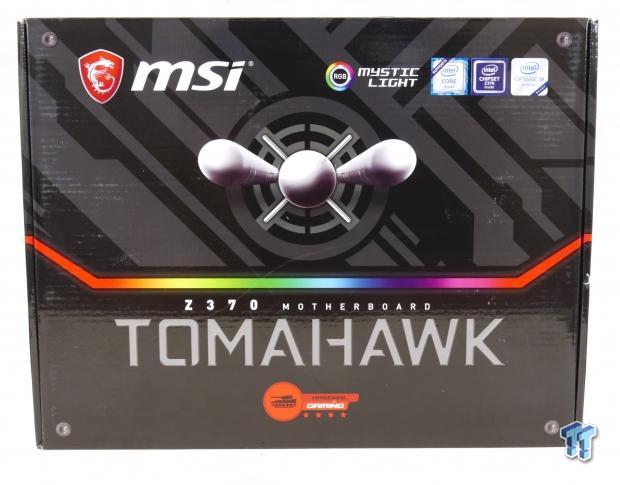
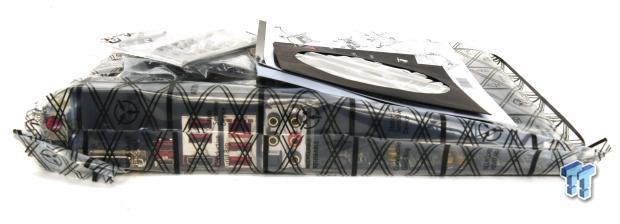
The box for the Z370 TOMAHAWK features box art that insinuates the motherboard is not only colorful but powerful like a Tomahawk missile. Sometimes I wonder if customs opens the package just because of the motherboard model name (joke). Packaging is decent as well.
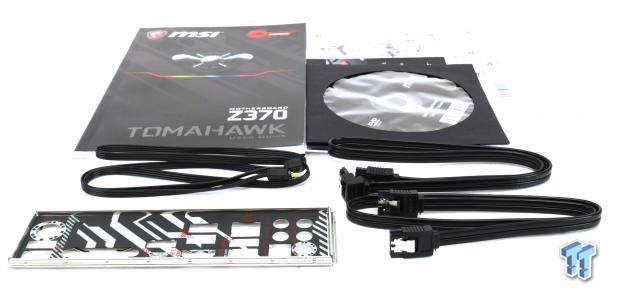
The accessory package includes four SATA6Gb/s cables, IO shield, RGB LED extension cable, case badge, manual, and driver DVD.
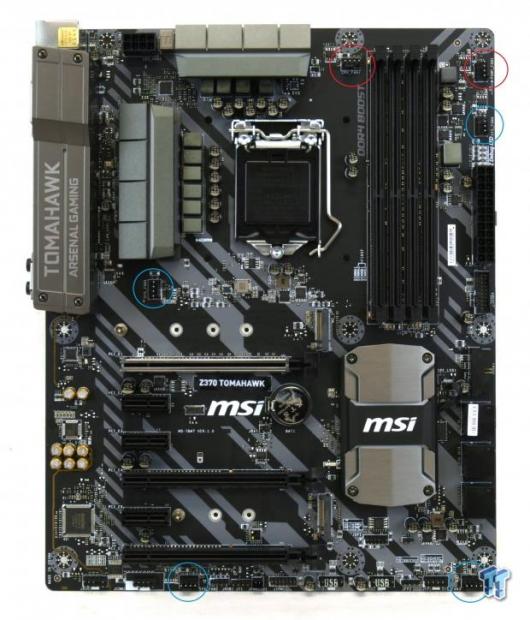
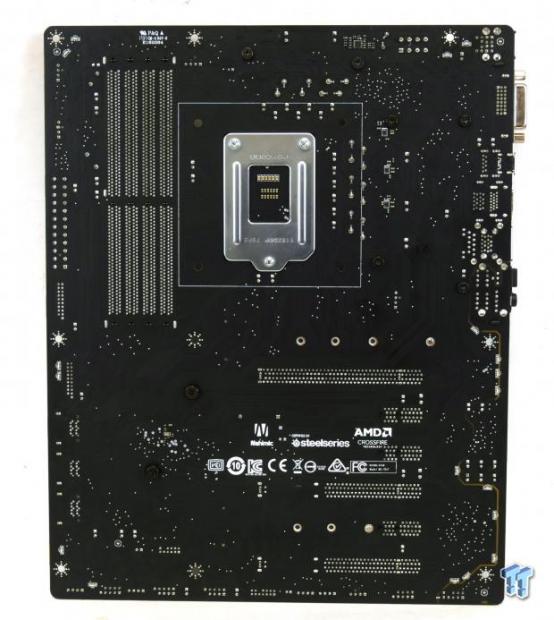
The Z370 TOMAHAWK has six fan headers, all of them are rated up to 1A and support both PWM and DC operational modes. The four headers circled in blue are in DC mode by default while the two headers circled in red are in PWM mode by default. The headers can be controlled and changed through the UEFI or through MSI's Windows application.
The motherboard's color theme is simple and uses a mixture of materials to resemble different parts. They have tried to make the motherboard look militaristic with metal paneling on the PCH, bolts in the IO cover, and shaping on the VRM heat sinks. I personally like how it looks, and many others will too because the motherboard is simple and can fade into the background if users wish. The back of the motherboard is bare of any ICs.
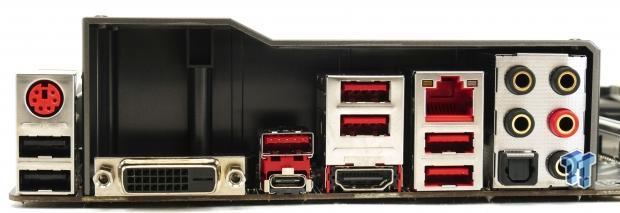
The rear IO panel features PS/2 keyboard and mouse, two USB 2.0 ports, DVI, HDMI, USB 3.1 type-A, USB 3.1 type-C, four USB 3.0 ports, 1Gbit LAN, and 7.1 gold-plated audio outputs with S/PDIF out.
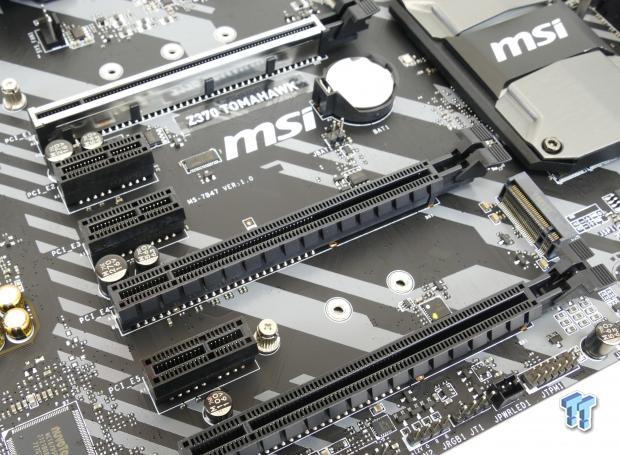
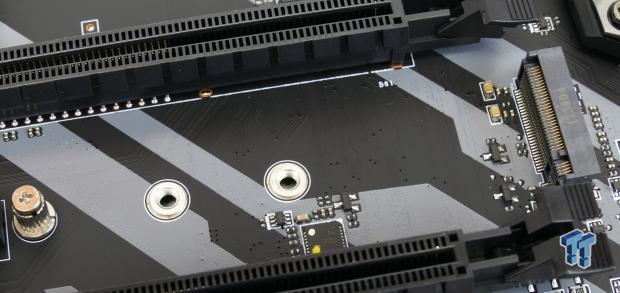
The PCI-E layout is a bit odd. The first slot is directly routed to the CPU, and it's the only x16 slot routed to the CPU. You are limited to CrossFireX on this motherboard. The three x1 slots and bottom two x16 slots are routed to the PCH. Two of the x1 slots share bandwidth (you can only use one at a time).
The middle x16 slot is x4 routed to the PCH and shares all of its bandwidth with the bottom M.2 slot. The last x16 slot is actually x1 electrical. If you want to run CrossFireX, you need to use the first x16 slot and the middle x16 (x4) slot. The bottommost M.2 slot shares all bandwidth with the x4 PCI-E x16 slot, but if used with a SATA based M.2 drive the x4 slot will still work but SATA5 won't work.
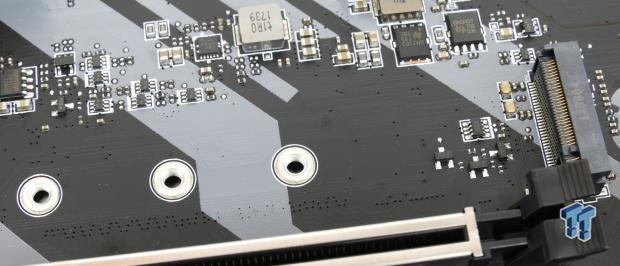
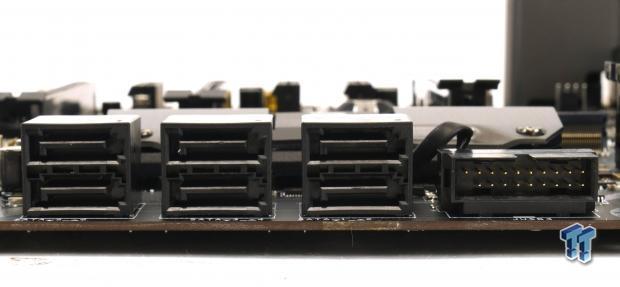
The top M.2 slot is routed to the PCH and supports PCI-E and SATA based drives, but if you use a SATA based drive, SATA1 will be disabled. The motherboard also features six PCH connected SATA6Gb/s ports.
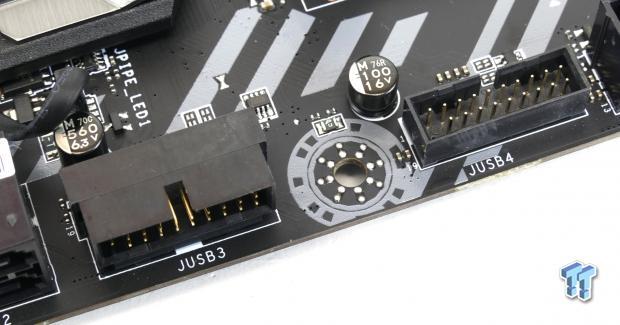
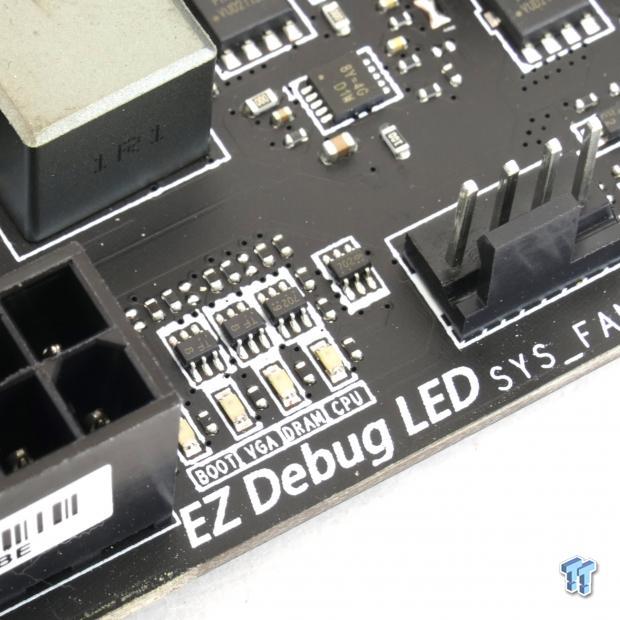
Two USB 3.0 internal headers are located above the SATA ports, one is right-angled and the other is straight angled. There are also boot diagnostic LEDs located above the 24-pin power connector.
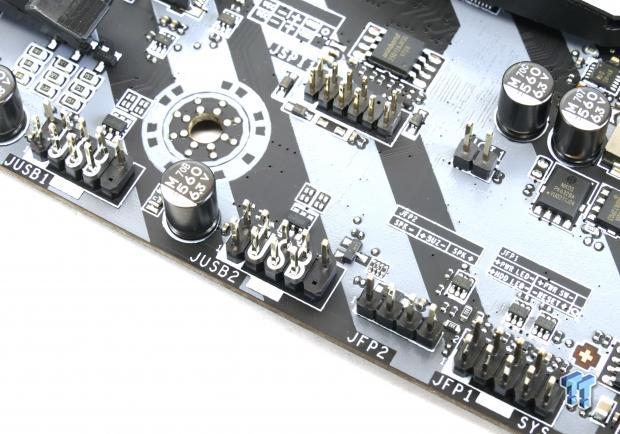
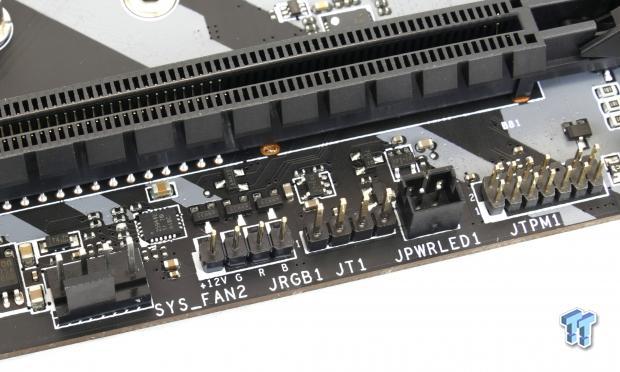
At the bottom of the motherboard, we find two USB 2.0 internal headers and our front panel headers. An RGB LED header can be found at the bottom of the motherboard.

The heat sinks are all screwed into the motherboard and they seem to make solid contact with the MOSFETs.
MSI Z370 TOMAHAWK Circuit Analysis
Circuit Analysis
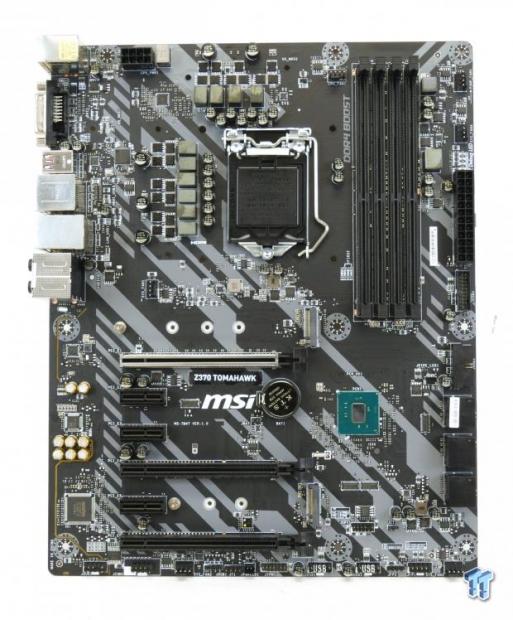
The motherboard reveals itself without heat sinks.
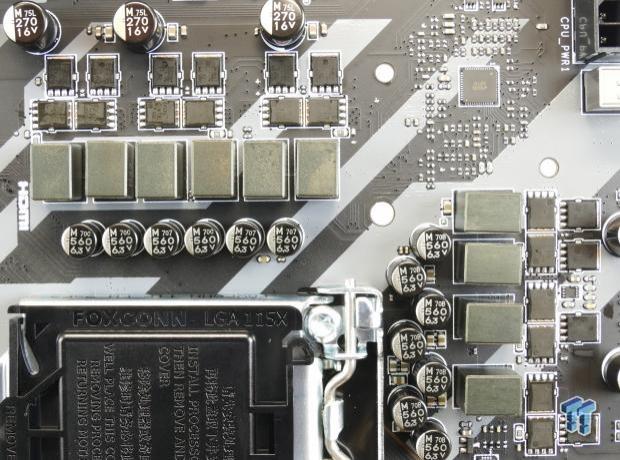
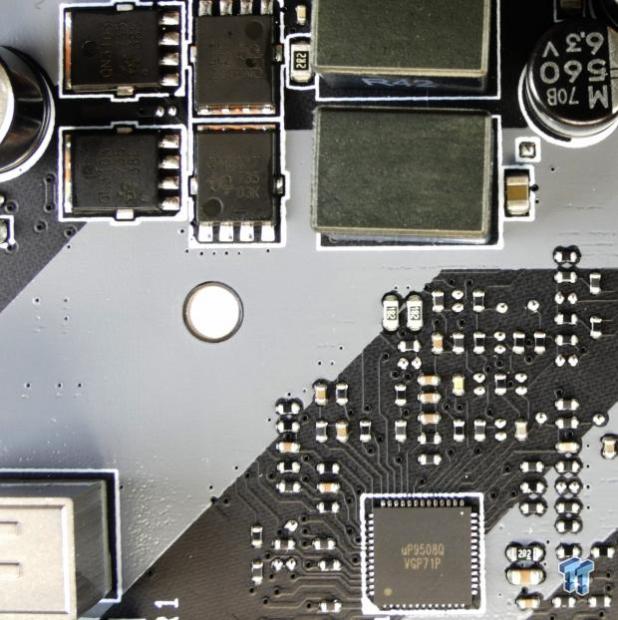
The motherboard VRM is 8+2 phases. It uses the same UPI uP9508Q PWM controller we found on the Gaming Pro Carbon, which is rated for a maximum of 3+2 phases, but it seems that it's in a 4+1 phase mode somehow. The motherboard uses new UBIQ MOSFETs for the high-side and low-side MOSFETs. The QN3107 and QN3103 are used as high-side and low-side MOSFETs, I estimate they can do around 25A of output, in the end, each, but they have insanely high ratings over 100A for burst operation.
We will see how they do in the thermal testing section. I also found that each set of two phases had one driver, so they are doubling up inductors and MOSFETs for each PWM phase to get 8 phases. The memory VRM uses one phase and a real phase doubler for two phases in a two low one high-side MOSFET configuration.
The uP1961 is used as the doubler and dual driver. We also found a Richtek RT9553B high accurate current/voltage sensing and protection IC near the PWM controller, which might be how MSI is getting one extra phase-out of the CPU side (maybe it helps combine two real phases into one).
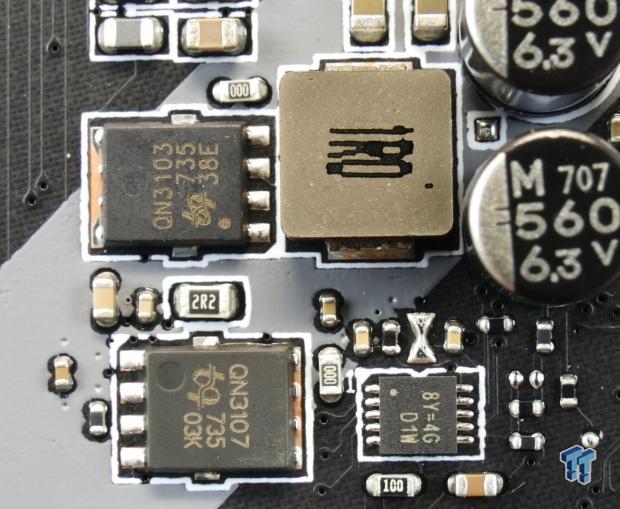
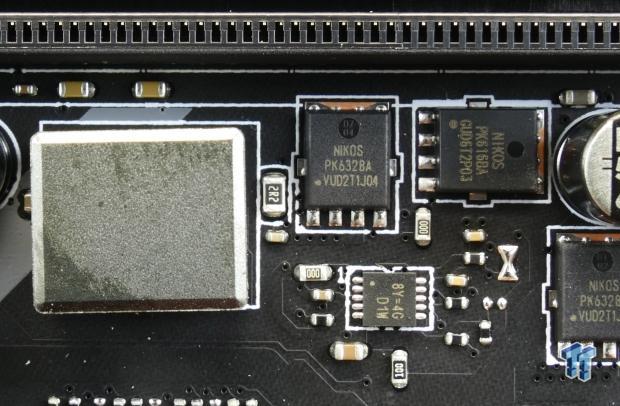
The VCCSA VRM use a single phase Richtek RT8125E PWM controller with integrated driver and the same UBIQ MOSFETs as the CPU VRM. The memory VRM uses a Richtek RT8125E PWM controller with integrated driver and a two low one high-side MOSFET setup using NIKOS N-channel MOSFETs.
MSI Z370 TOMAHAWK Circuit Analysis Continued
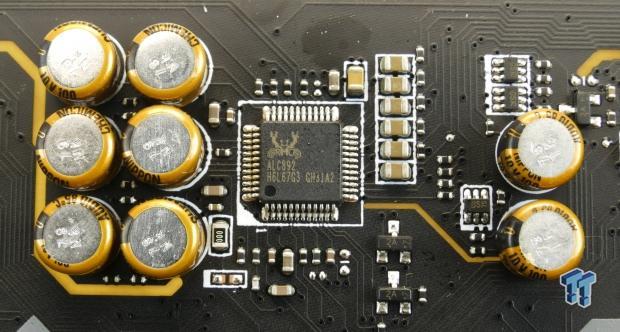
A Realtek ALC892 is used as the audio codec along with Nippon Chemicon audio capacitors and a physical PCB divide to improve audio quality.
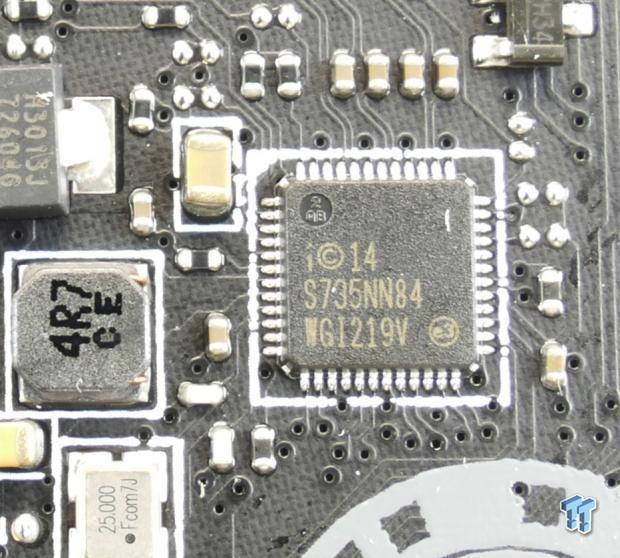
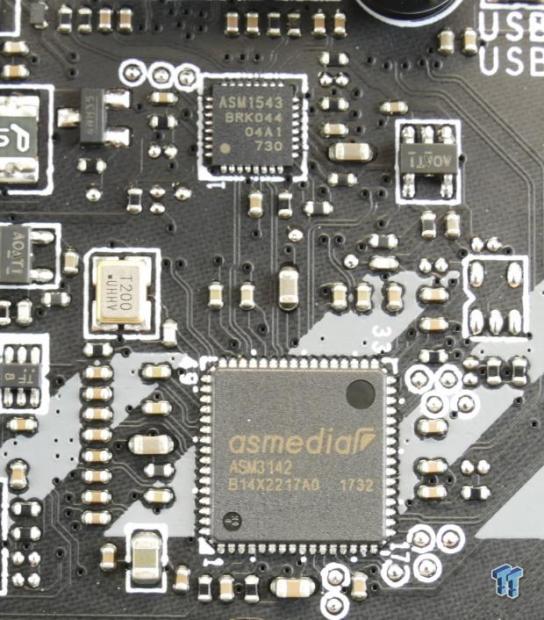
MSI did use an Intel NIC on this motherboard, and we find an Intel PHY, the i219v near the LAN port. USB 3.1 uses an ASMedia ASM3142 controller and an ASMedia ASM1543 type-C switch and CC logic chip.
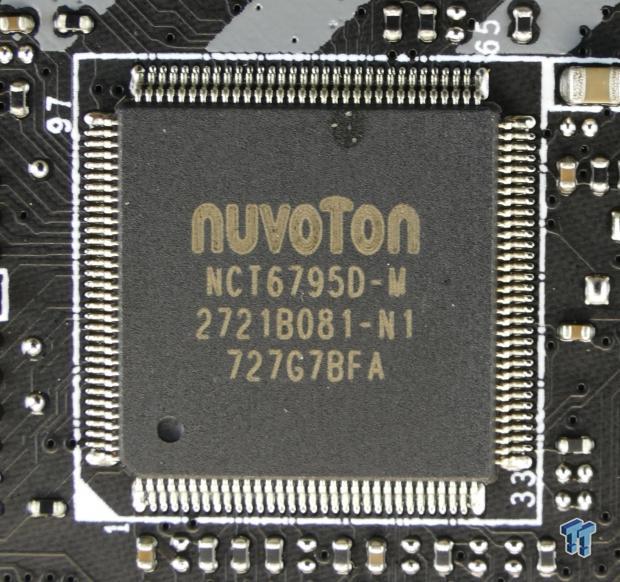
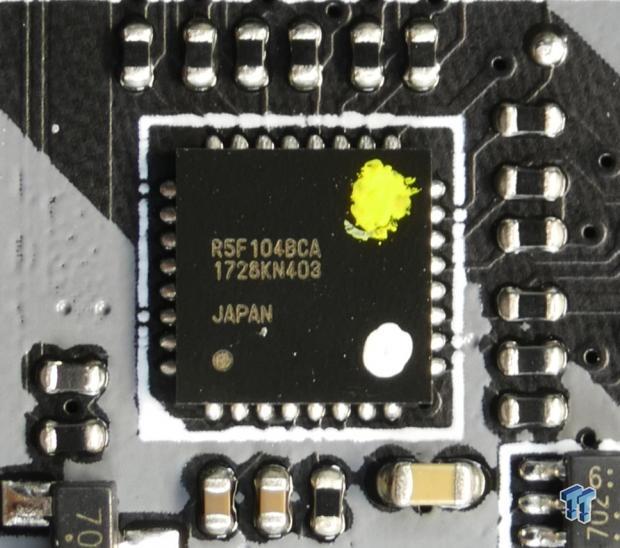
The main SuperIO controller is the nuvoTon NCT6795D for the PS/2 port, system fan control, and system monitoring. A Renesas R5F104BCA microcontroller is used as the RGB LED controller.
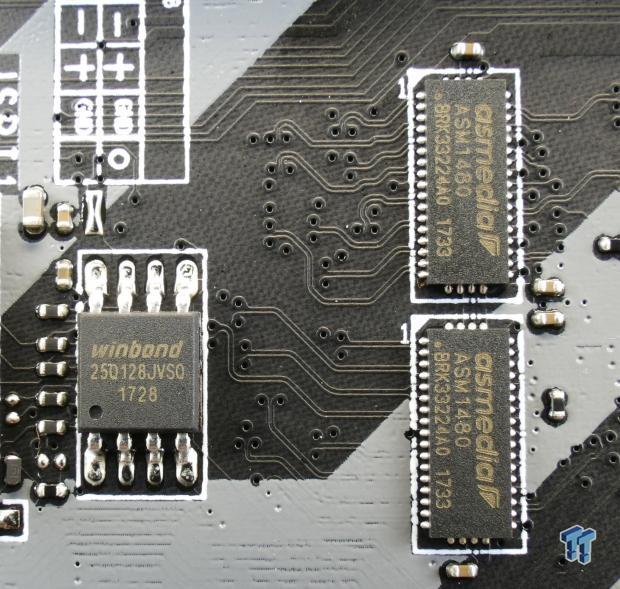
The motherboard uses a single 128Mbit(16MB) BIOS ROM. We also find two ASMedia quick switches used to switch x4 between the middle x16 slot and the M.2 slot.
BIOS and Software
BIOS
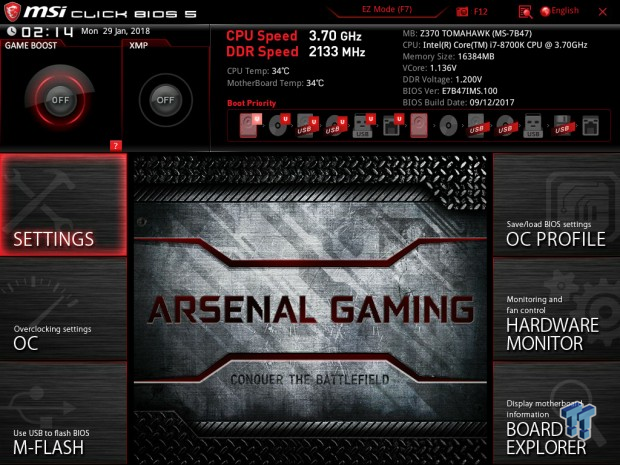
The UEFI BIOS offers two operating modes, an Easy mode, and an advanced mode. MSI's advanced mode is more impressive, and I like how they have their OC setting setup. The motherboard offers solid fan control in the form of a GUI. Their Board Explorer is also very impressive, where you can see exactly what components are plugged in.
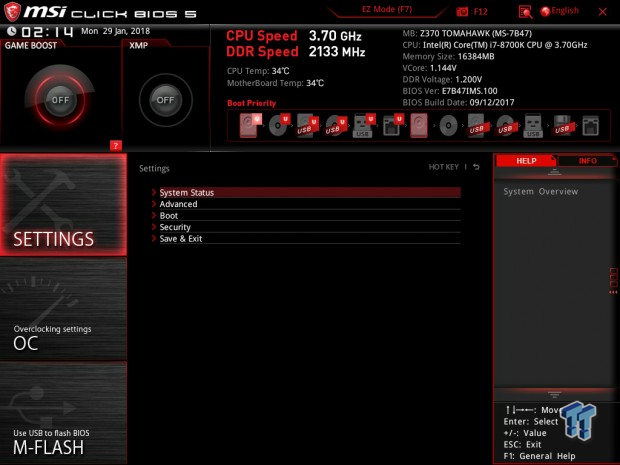
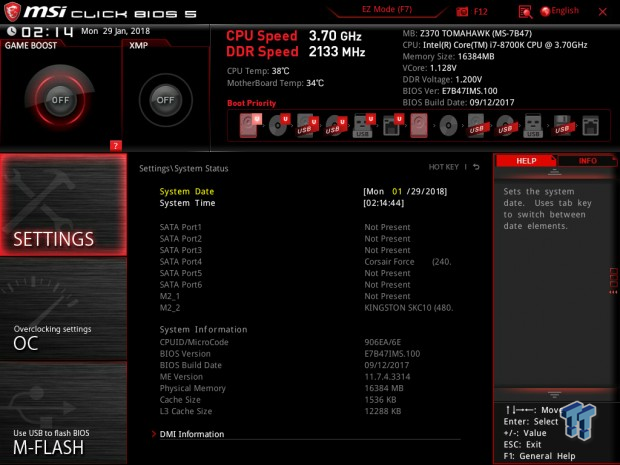
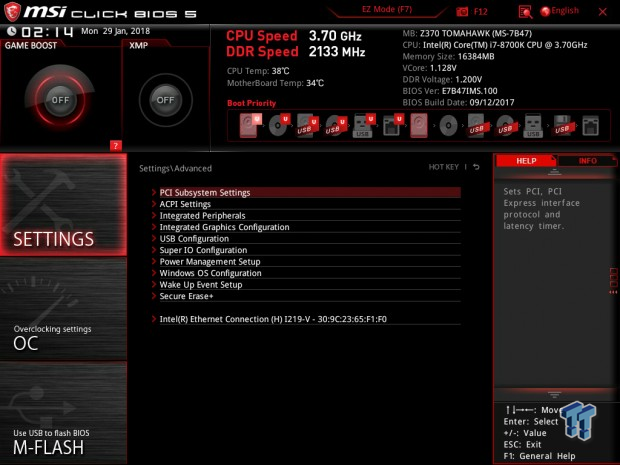
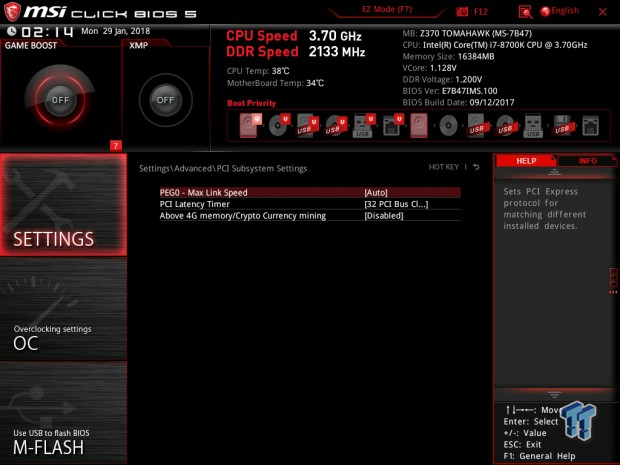
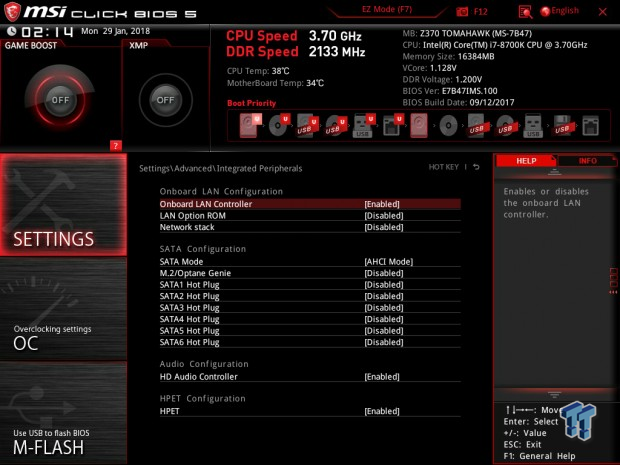
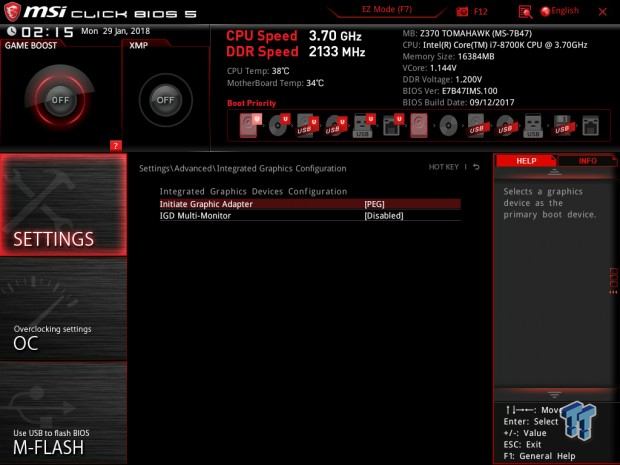
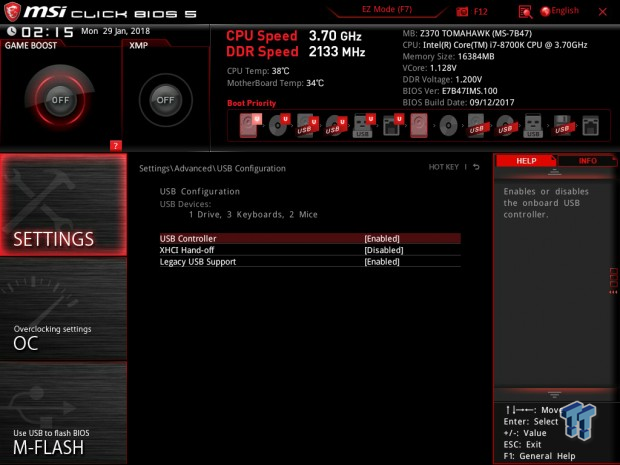
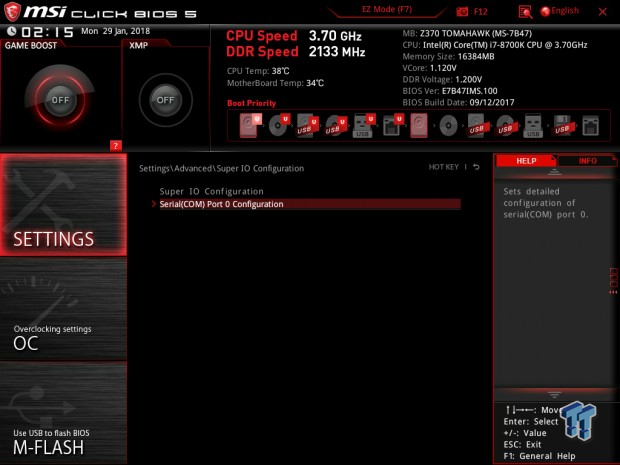
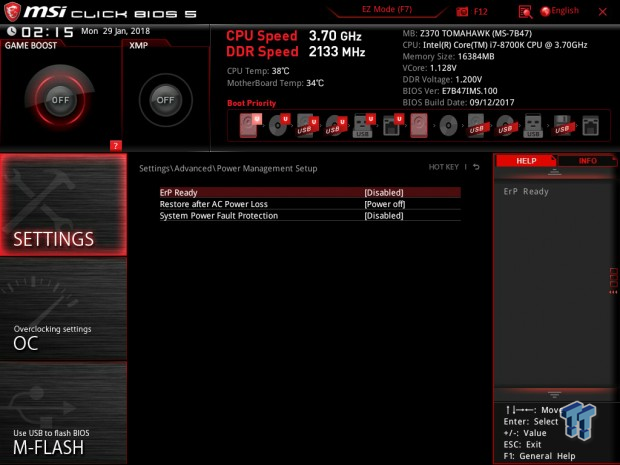
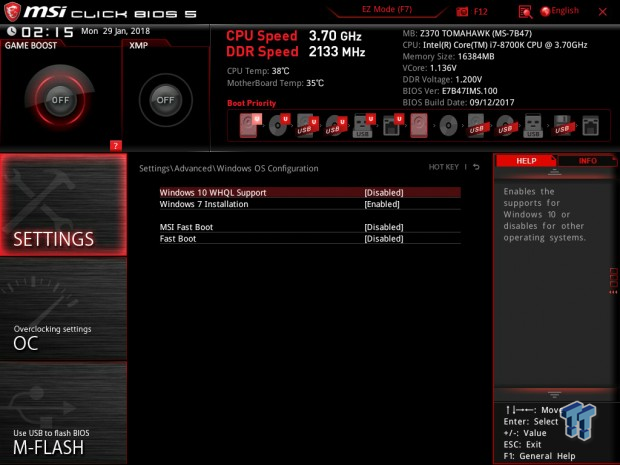
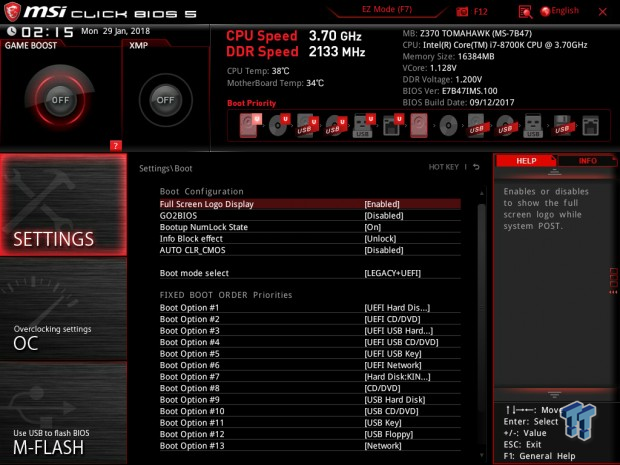
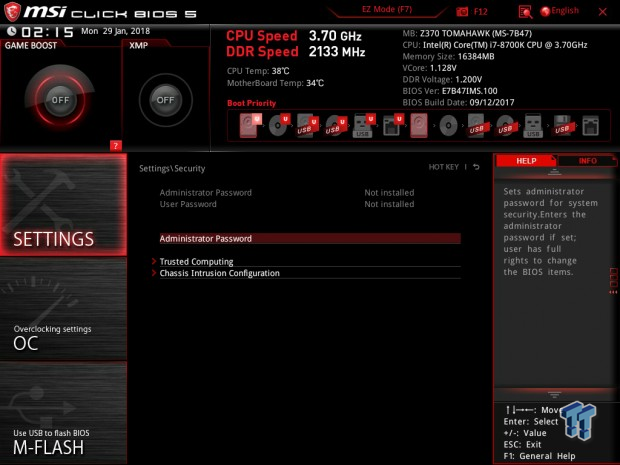
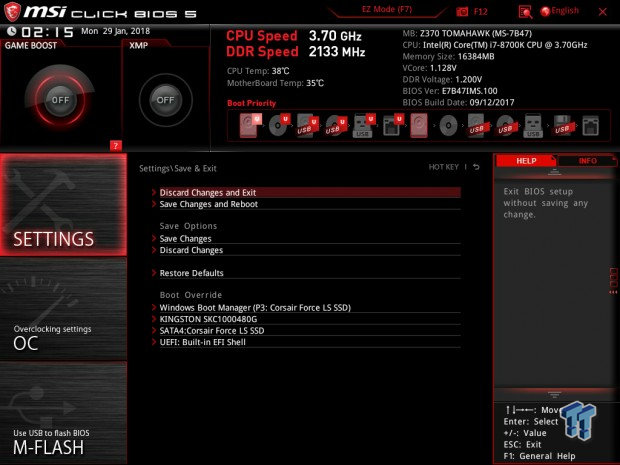
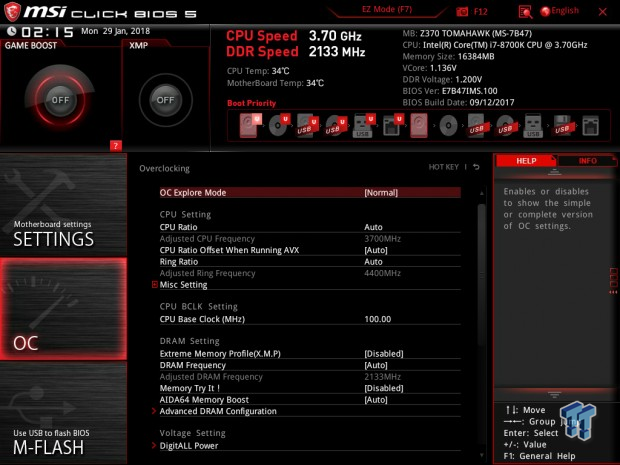
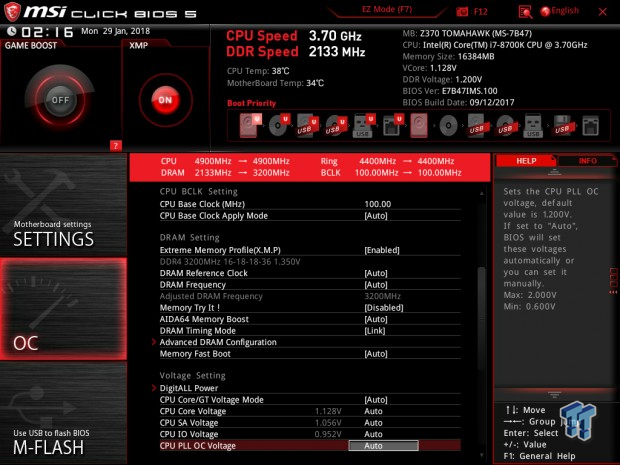
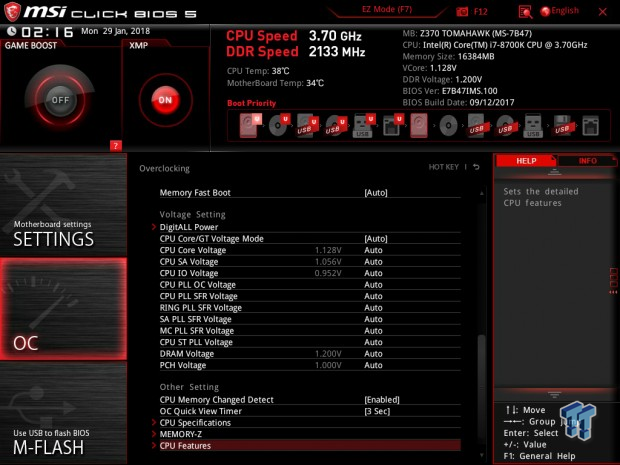
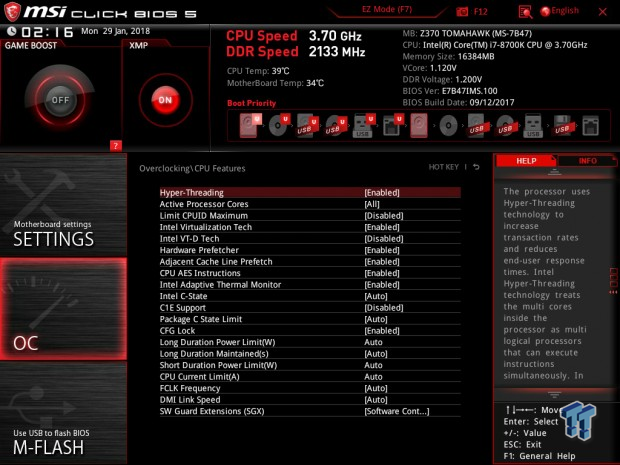
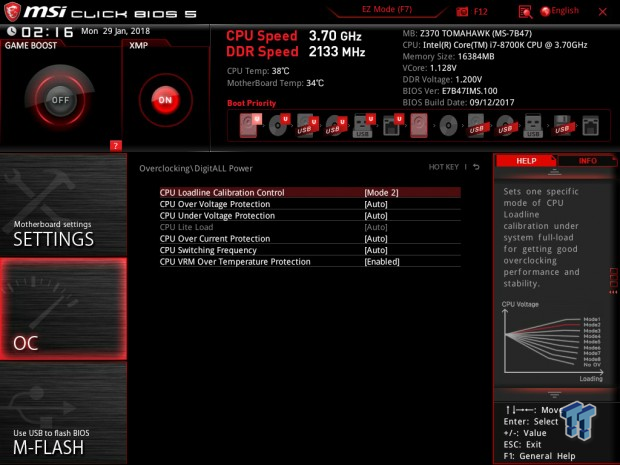
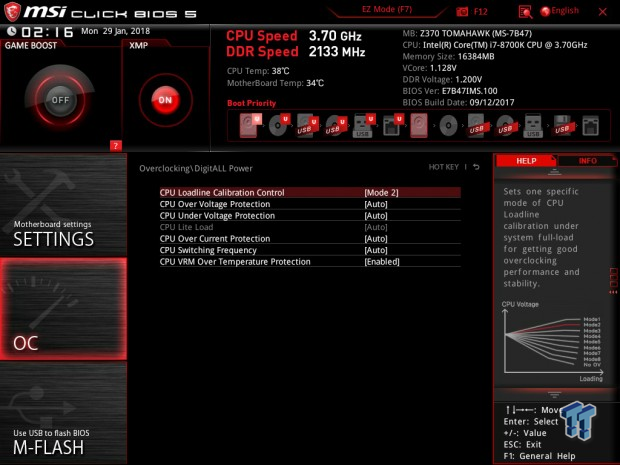
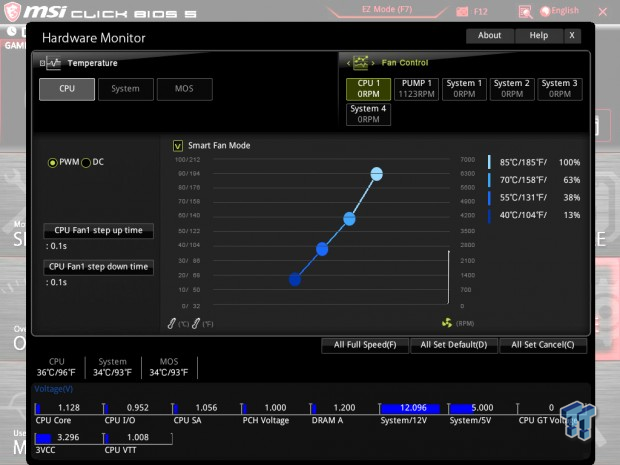
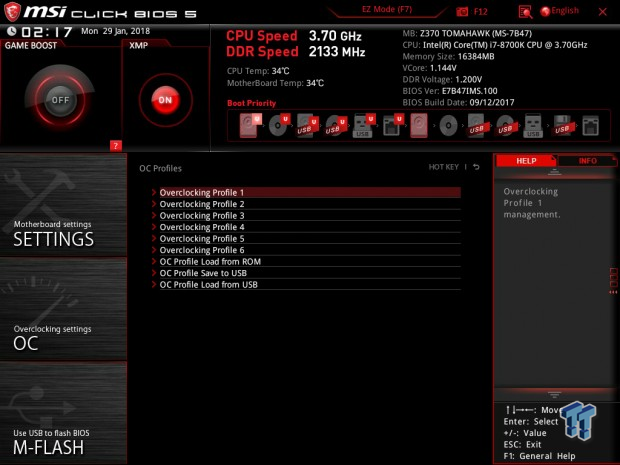
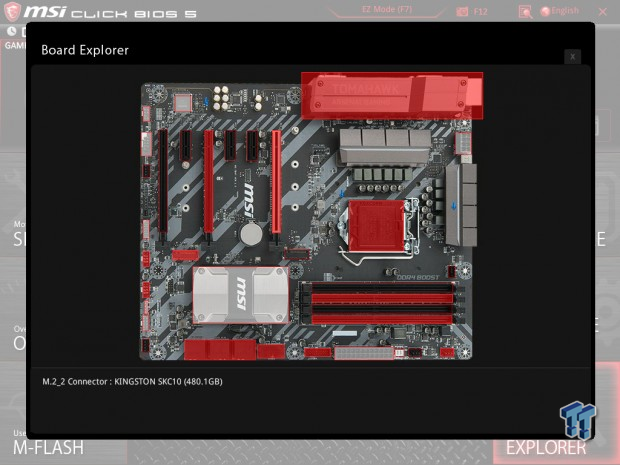
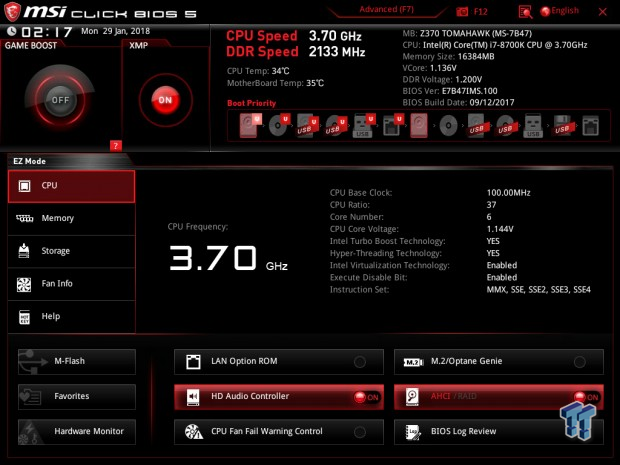
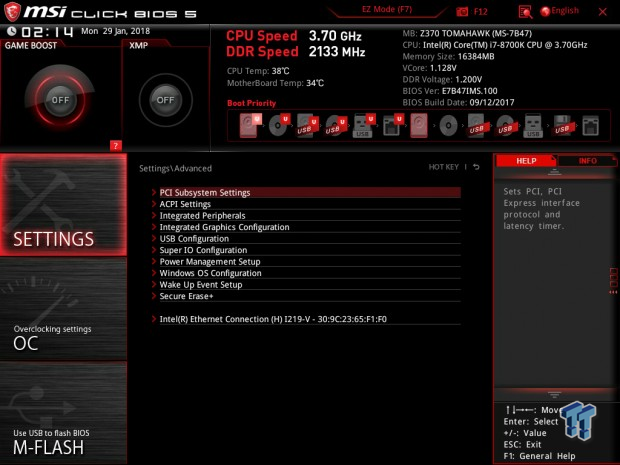
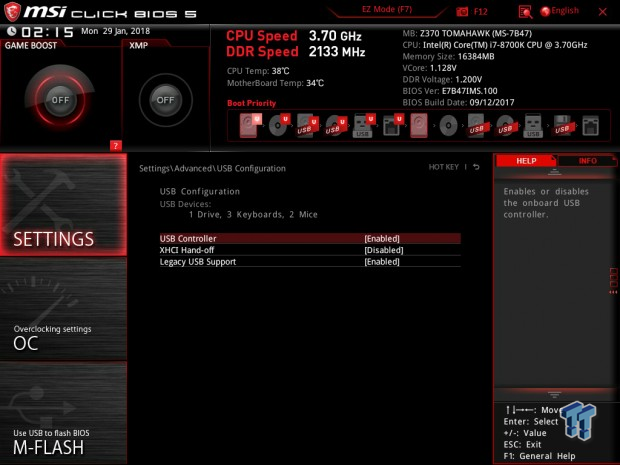
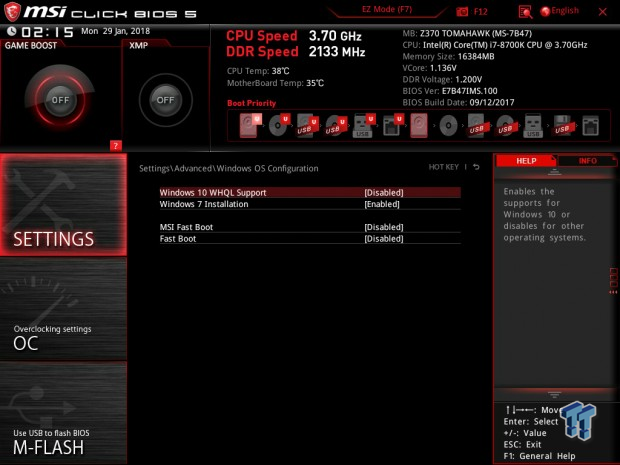
Software
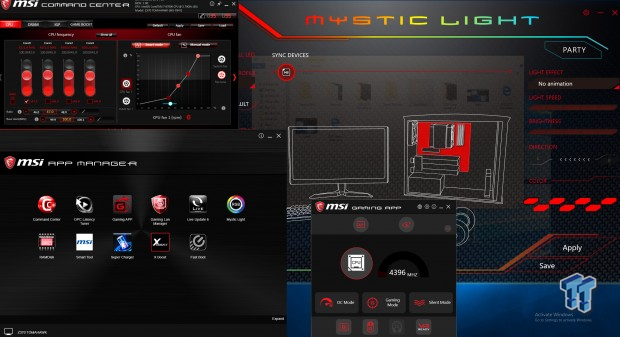
MSI includes APP Manager, Command Center, DPC Latency Tuner, Gaming APP, Gaming LAN Manager, Live Update 6, Mystic Light, RAMDisk, Smart Tool, Super Charger, X Boost, Fast Boot.
Test System Setup
Steven's Motherboard Test System Specifications
- Motherboard: MSI Z370 TOMAHAWK
- CPU: Intel Core i7 8700K
- Cooler: Corsair H110 - Buy from Amazon
- Memory: Corsair Dominator Platinum (2x8GB) 3200MHz
- Video Card: NVIDIA GeForce GTX 1080 Ti FE - Buy from Amazon / Read our review
- Storage - Boot Drive: Kingston KC1000 480GB - Buy from Amazon / Read our review
- Storage - SATA6G Drive: Corsair Force LS 240GB - Buy from Amazon / Read our review
- Storage - M.2 Drive: Intel 750 400GB U.2
- Storage - USB Drive: Corsair Voyager GS 64GB - Buy from Amazon / Read our review
- Case: Corsair Obsidian 900D - Buy from Amazon / Read our review
- Power Supply: Corsair RM1000 - Buy from Amazon / Read our review
- OS: Microsoft Windows 10 - Buy from Amazon
- Monitor: ASUS PA328 ProArt 32" 4K - Buy from Amazon
- Keyboard: Corsair K70 LUX - Buy from Amazon
- Mouse: Corsair M65 PRO RGB - Buy from Amazon / Read our review
- Headset: Corsair VOID RGB Wireless - Buy from Amazon / Read our review
- BIOS: 1.00
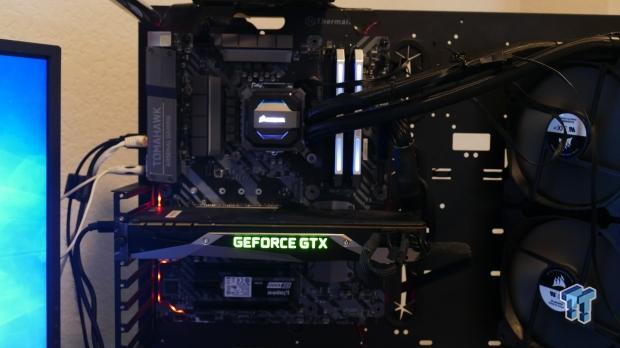
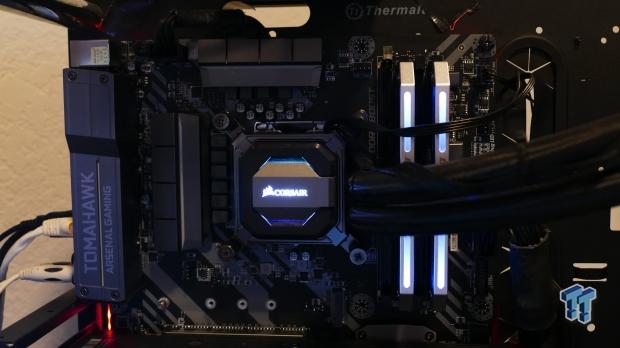
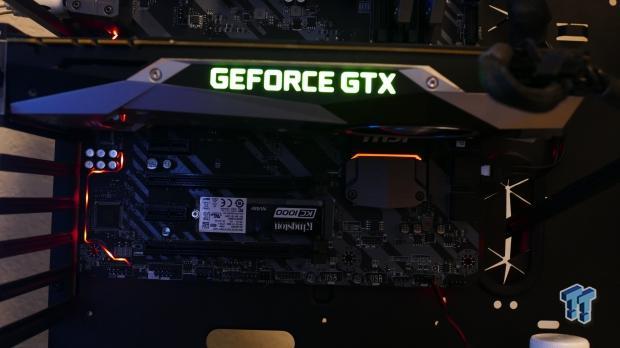
The Z370 TOMAHAWK can easily fade into the background and there are many RGB LEDs built into the motherboard, but the motherboard is bare otherwise. There are also RGBs on the right side of the motherboard facing outwards, and they aren't too bright so they won't distract from the rest of your system.
Overclocking
Overclocking Results
CPU Overclocking
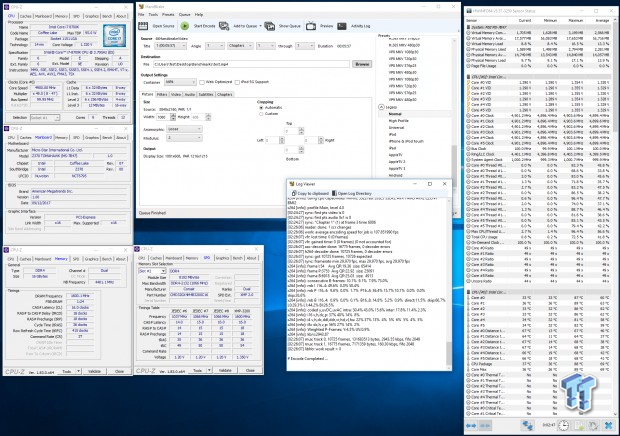
He Z370 TOMAHAWK overclocked our CPU to 4.9GHz quite easily, and it also overclocked our Dominator Platinum 3200Mhz to 3200MHz with ease.
Compatible Memory Overclocking Kits
In this section, I overclock four memory kits only using XMP, if the kit works then the results are below. I welcome memory vendors to send in their kits to be tested on each motherboard.
Corsair Dominator Platinum 3200MHz C16 8GBx2
As you can see above, the Dominator kit worked perfectly.
G.Skill TridentZ RGB 3600MHz C16 8GBx2
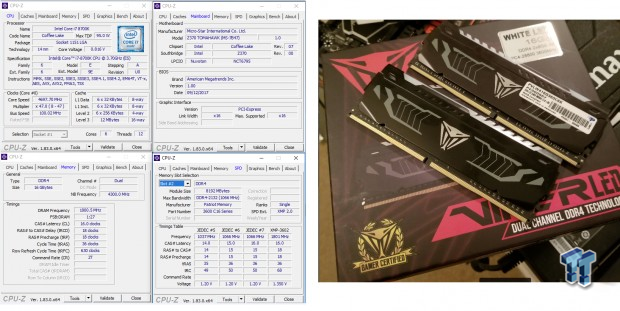
The board easily overclocked two of the G.Skill sticks to XMP with ease.
Patriot Viper LED 3600MHz C16 8GBx2
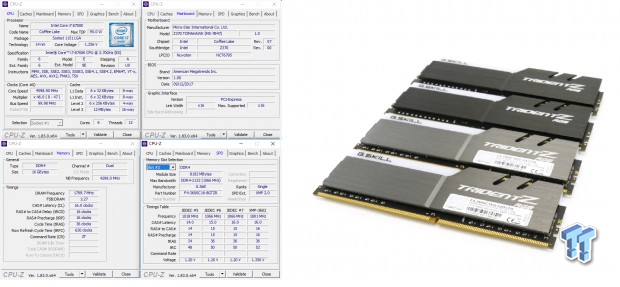
The motherboard also handled our Patriot kit with ease.
CPU, Memory, and System Benchmarks
CINEBENCH 11.5
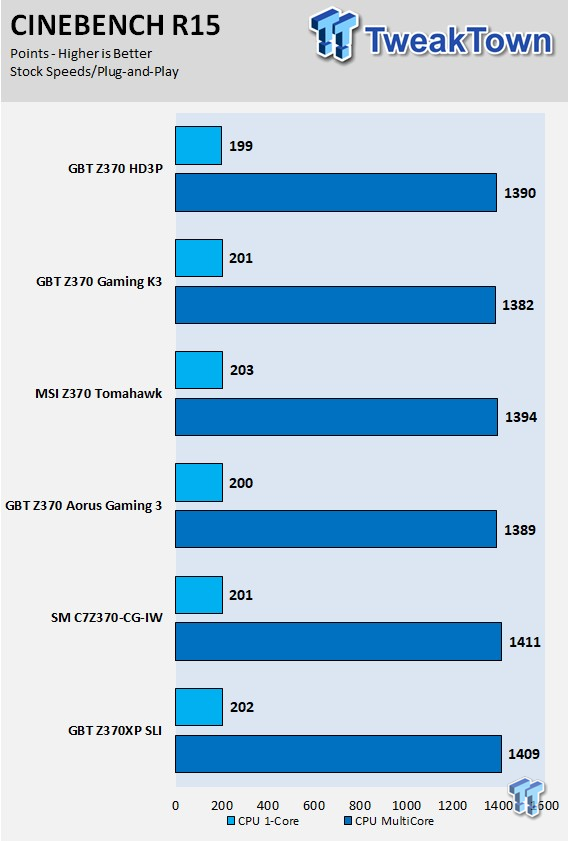
wPrime
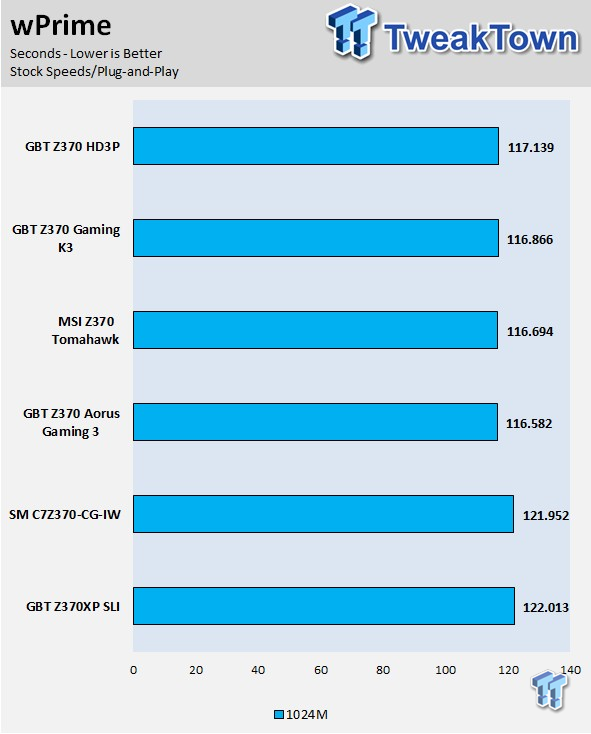
AIDA64 FLOPS and IOPS
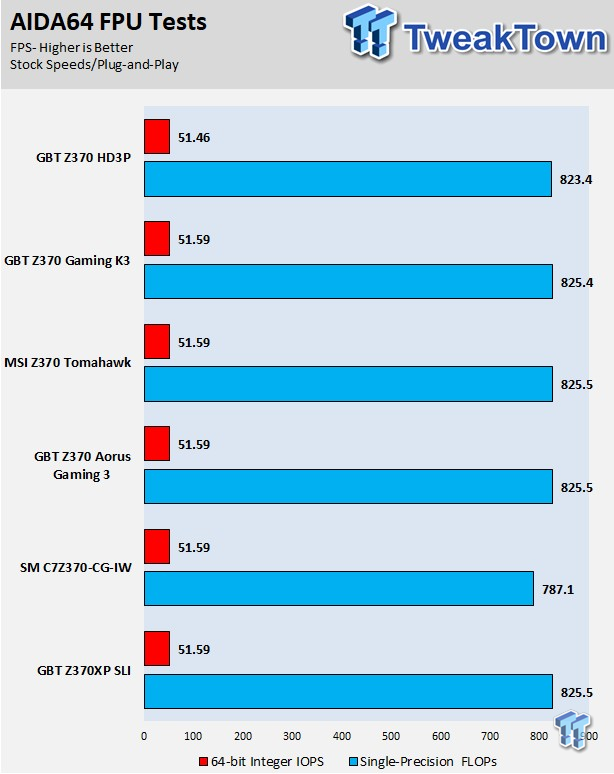
AIDA64 Memory
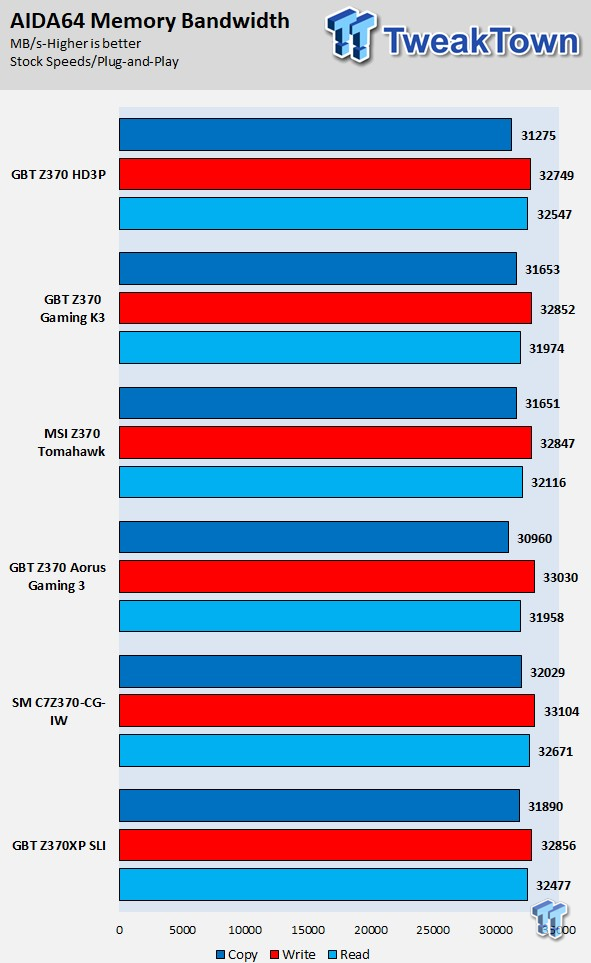
ScienceMark

HandBrake
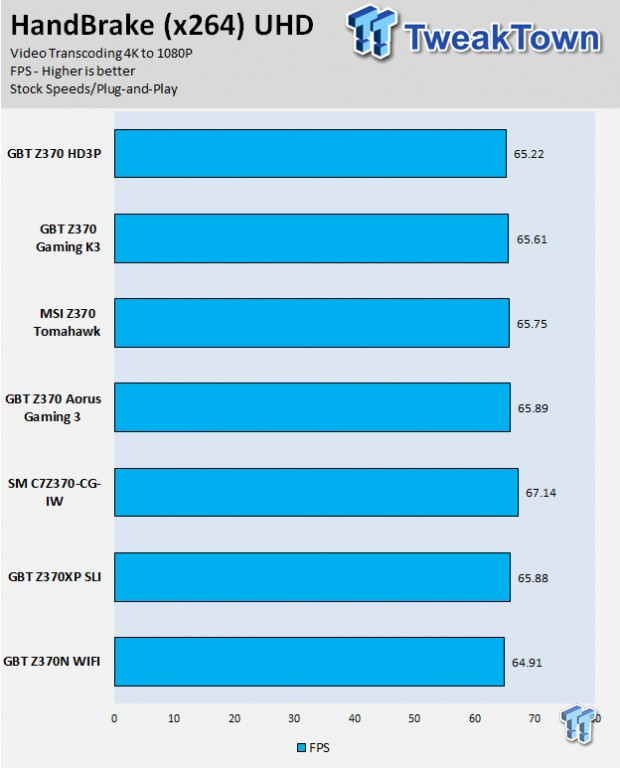
3DMark: Fire Strike
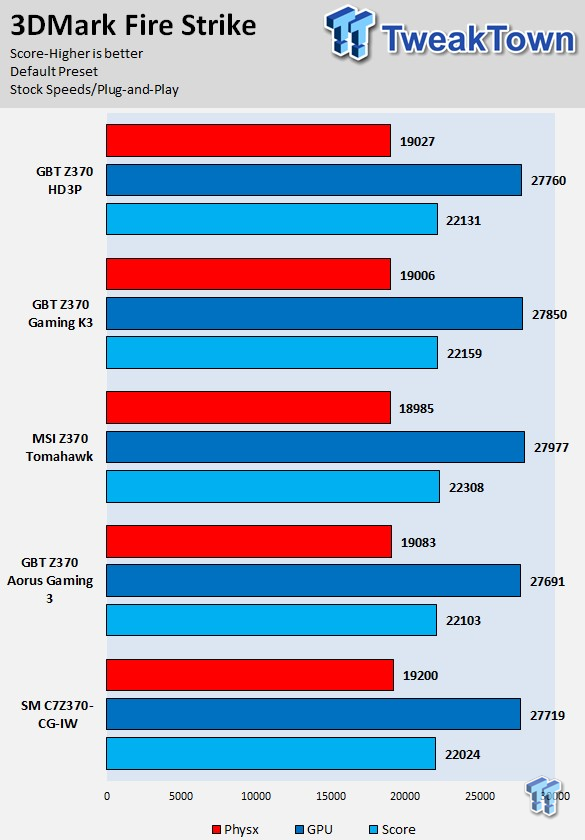
3DMark: Cloud Gate
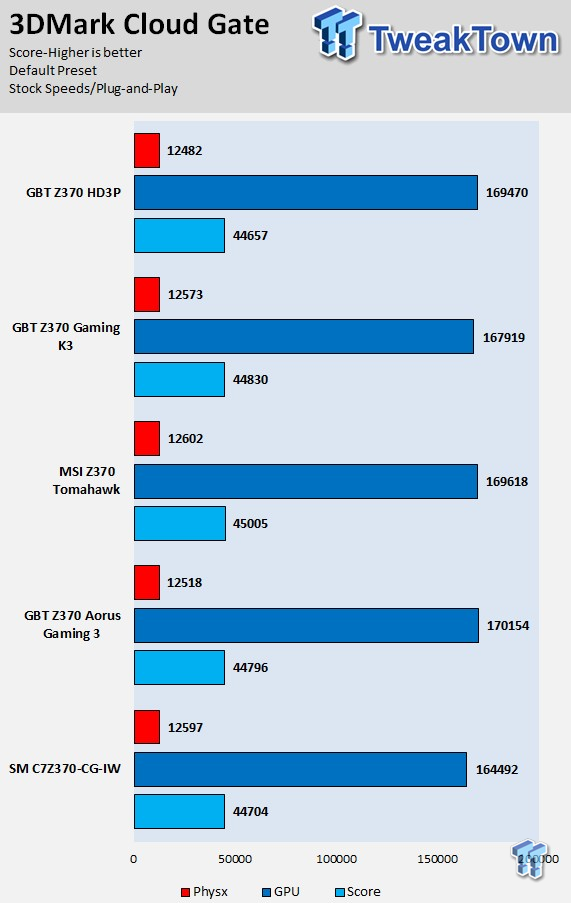
ResidentEvil 6
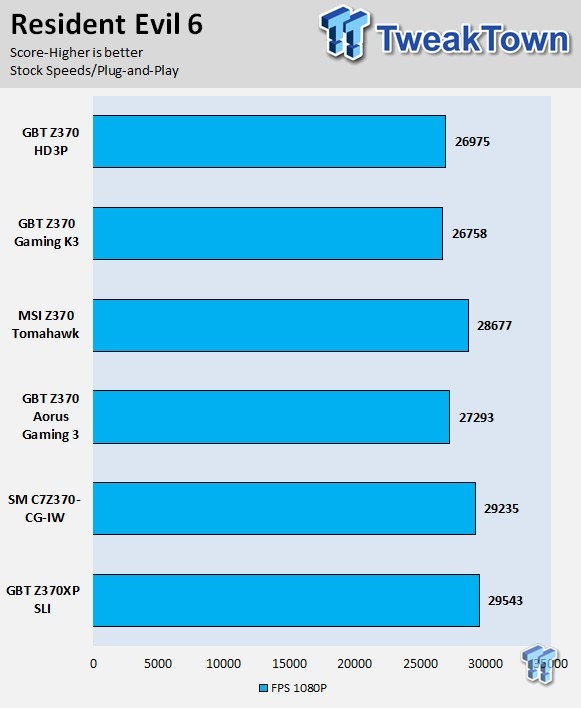
These tests are done out of the box, so I have decided to include whether or not the vendor has implemented some type of default overclocking, such as multi-core enhancement. Multi-core enhancement is when the motherboard vendor pushes all cores to maximum turbo speeds instead of just one or two.
MCE as I will call it, can cause instability if your CPU isn't great, and we would hope vendors would have it off by default, but it does offer a free performance boost out of the box. Some motherboards also might increase the BCLK a bit over stock to score higher, and some might even mess with the turbo boost table. If we standardize settings, then most motherboards should perform the same, but in this case, we haven't. The Z370 TOMAHAWK is using multi-core enhancement, but it's not crazy strong, so we don't see crazy high scores. Overall, performance was solid.
System IO Benchmarks
CrystalDiskMark SATA6G:
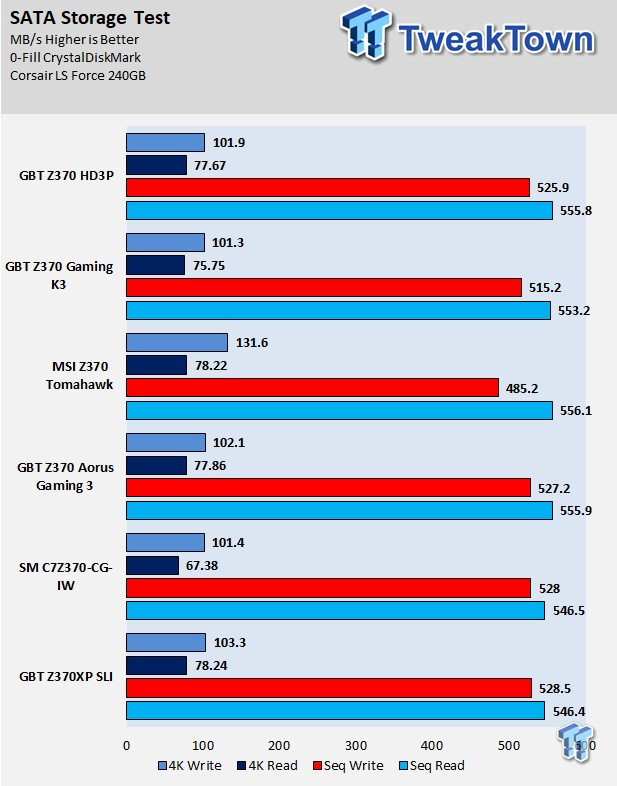
CrystalDiskMark M.2:
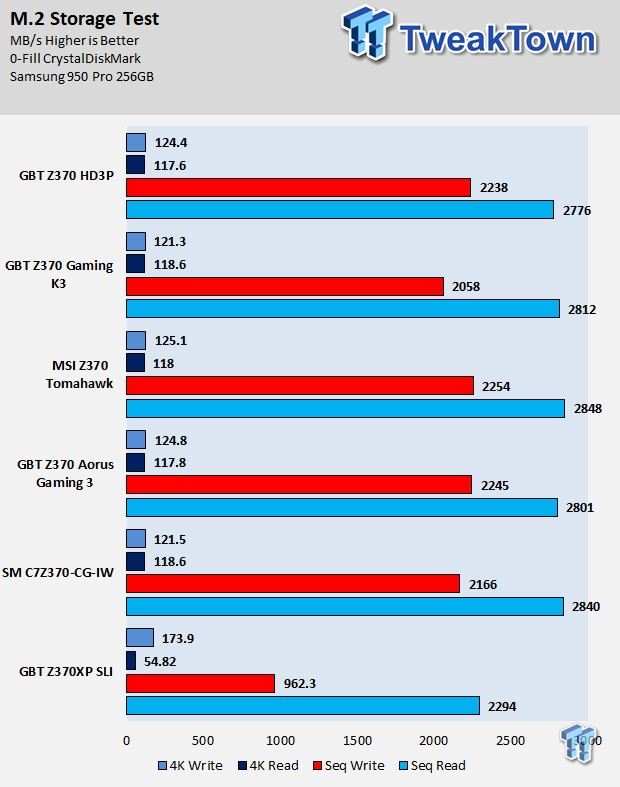
ixChariot Network Throughput:
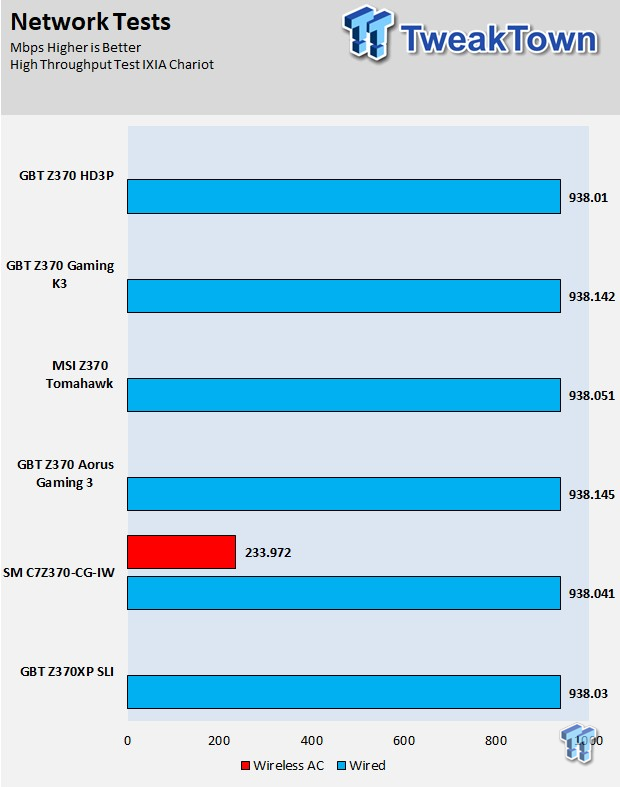
The Z370 TOMAHAWK's M.2 performance is solid and you can see how our new KC1000 does against the 950 Pro at the bottom of our charts.
Audio RMAA 5.5:
I disable all audio features, set the correct bitrates, and then test the audio with a loopback test.
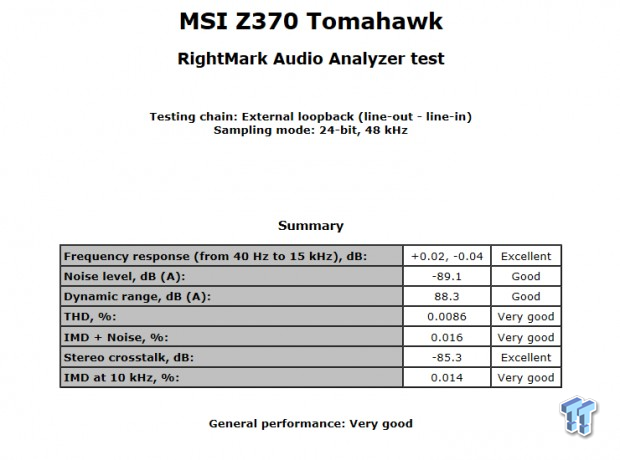
Sound Judgment by Ear: Very Good, The ALC892 isn't the most recent of highest performing audio codec but it gets the job done. There are five ratings for audio: 1. Problems, 2. Okay, 3. Acceptable, 4. Very good, 5. Excellent
Thermal Imaging and Power Consumption
System power is measured at the wall with an AC power meter.
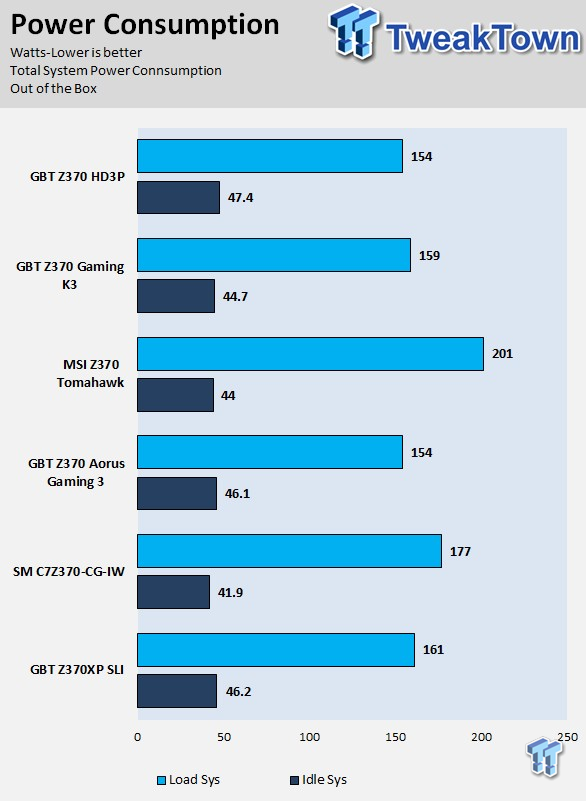
Note on Thermal Images: In the temperature section, we use our Seek thermal imaging camera to capture the surface temperatures of major components on the board. I look at the VRM and then all other things that light up the screen. If there is something to worry about, then I will state it. Otherwise, I will just show the hotter running parts of the board for fun. Unless some component is over 80-90C, then there isn't anything to worry about.
All systems will act differently, so I will look for commonalities, such as how far from the VRM the heat spreads through the PCB and the difference in temperature between the front side and backside of the PCB. Keep in mind, the majority of the heat from the VRM goes into the PCB as it is a giant soldered on copper heat sink. A larger difference in temperature between the back and front of the PCB points towards a more effective heat sink.
Thermal Testing at Stock Speeds:
The image on the left is always at idle, and the image on the right is at load. During ALL TESTS, fans to the right of the motherboard from the (Corsair H110i) radiator are left on automatic mode (ramps with internal block temperature). Additionally, a 120mm fan is situated right above the VRM, and it blows down at a medium rate (very quiet). Thermal Images are taken at loop 15 of Intel Burn Test
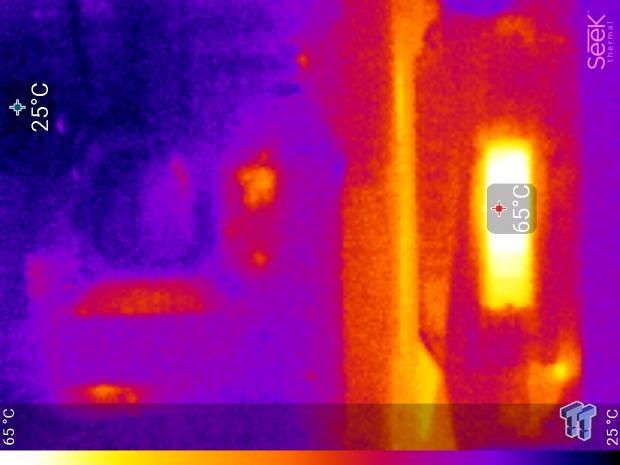
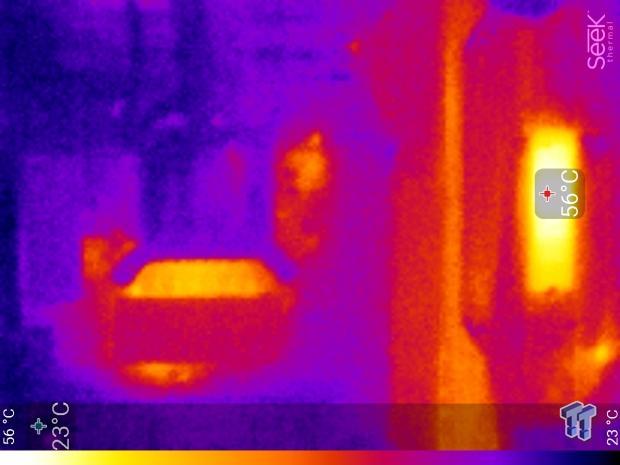
Full frontal.
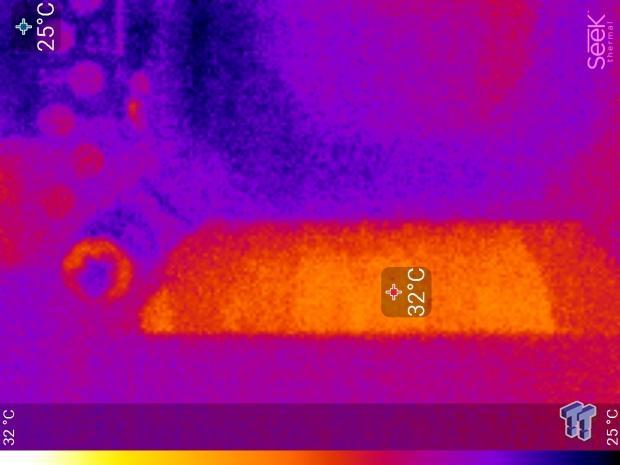
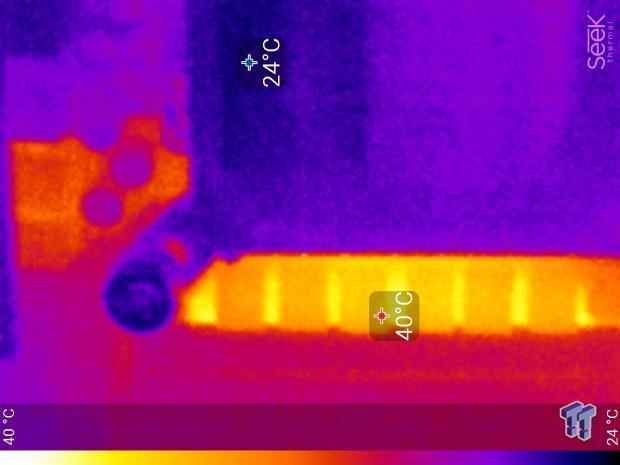
Up-close of the front of the VRM.
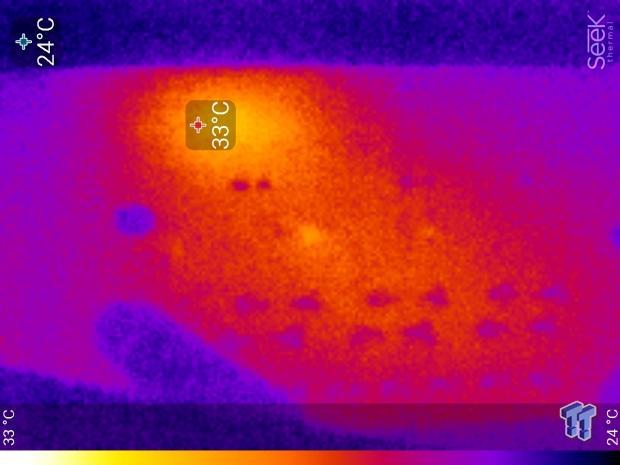
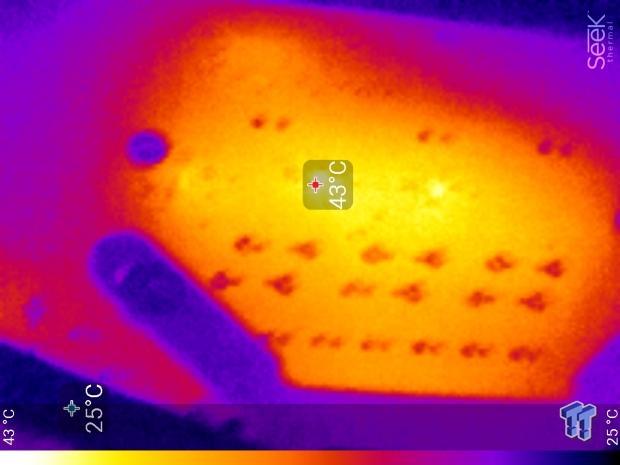
Up-close of the back of the VRM.
Thermal Testing at 4.9GHz/1.3v Overclocked Speeds:
The image on the left is always at idle, and the image on the right is at load. During ALL TESTS, fans to the right of the motherboard from the (Corsair H110i) radiator are left on automatic mode (ramps with internal block temperature). Additionally, a 120mm fan is situated right above the VRM, and it blows down at a medium rate (very quiet). We standardize this test with a 4.9GHz on all cores with 1.3V real under load and take pictures at the 80% mark of HandBrake rendering a 4K video.
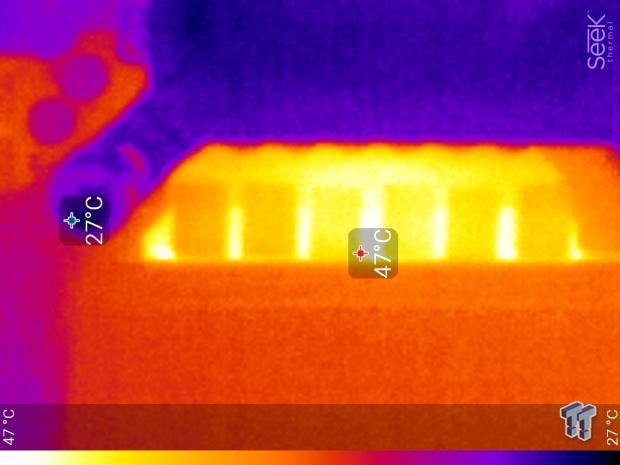
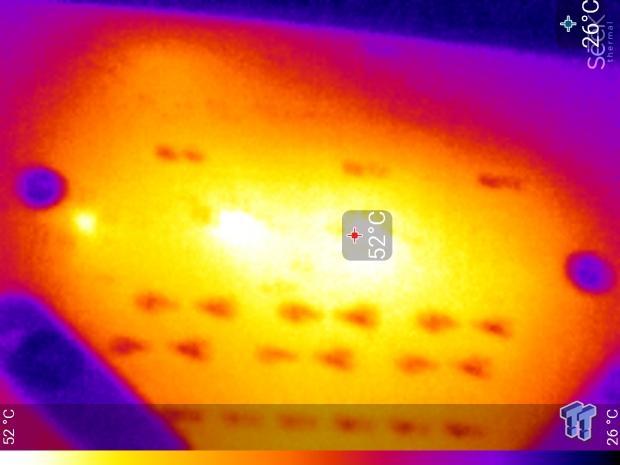
Up-close of the front and back of the VRM.
The Z370 TOMAHAWK's thermal performance is surprisingly decent. It might be because MSI changed the ON Semiconductor MOSFETs for UBIQ MOSFETs, which are obvious looking better under a thermal camera. Overall performance is great, but please remember we did apply some active airflow. Anything under 60C is great, 60-80C is acceptable, and anything above 80C is a bit worrisome (if at stock).
What's Hot, What's Not & Final Thoughts
Here are key points about the MSI Z370 TOMAHAWK.
What's Hot
Surprising VRM Performance: I expected the VRMs on this motherboard to get warm quickly, but that wasn't the case. The new UBIQ MOSFETs that MSI used along with the heat sinks produce better results than on their Z370 motherboards with other brands of MOSFETs.
USB Support: The rear IO offers up four USB 3.0 ports, two USB 2.0 ports, one USB type-A port, and one USB type-C port. The motherboard also has two USB 2.0 and 3.0 internal headers.
Fan Headers: The motherboard provides six fan headers, which is more than most motherboards in this price range.
Aesthetics: The motherboard's aesthetics are quite good. I like the lights in the PCH heat sink and those on the backside of the PCB; they are very subtle. The motherboard's heat sinks and military themes IO cover make the motherboard look solid.
What's Not
Odd PCI-E layout: The first PCI-E slot is the only one routed to the CPU, so you can't do SLI. However, the second x16 slot is routed x4 to the PCH and shares all of its bandwidth with the bottom M.2 slot. The last x16 slot is actually just an x1 slot routed to the CPU and two of those x1 slots share bandwidth.
Final Thoughts
The MSI Z370 TOMAHAWK is a pretty solid motherboard with a nice array of features and performance. I also like the fact that MSI used re-drivers for the rear USB. The two USB 3.0 internal headers is a nice touch, and the rear USB count is high, which is good because USB is the most widely used connection type.
The motherboard has a very solid aesthetic to it as well, it would do very well in a military-themed build, and the PCH heat sink is simple and looks great when its lights are turned on. If you want a solid well priced Z370 motherboard with a solid feature offering, give the Z370 Tomahawk a look.
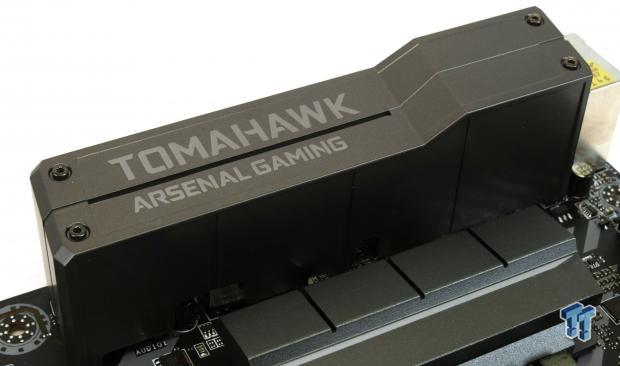

| Performance | 96% |
| Quality | 91% |
| Features | 92% |
| Value | 90% |
| Overall | 92% |
The Bottom Line: MSI's Z370 Tomahawk offers a military theme, solid features, and its default performance strikes a solid balance.
PRICING: You can find products similar to this one for sale below.
 United
States: Find other tech and computer products like this
over at Amazon.com
United
States: Find other tech and computer products like this
over at Amazon.com
 United
Kingdom: Find other tech and computer products like this
over at Amazon.co.uk
United
Kingdom: Find other tech and computer products like this
over at Amazon.co.uk
 Australia:
Find other tech and computer products like this over at Amazon.com.au
Australia:
Find other tech and computer products like this over at Amazon.com.au
 Canada:
Find other tech and computer products like this over at Amazon.ca
Canada:
Find other tech and computer products like this over at Amazon.ca
 Deutschland:
Finde andere Technik- und Computerprodukte wie dieses auf Amazon.de
Deutschland:
Finde andere Technik- und Computerprodukte wie dieses auf Amazon.de
Similar Content
Related Tags
